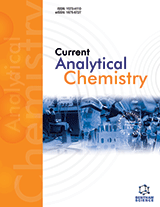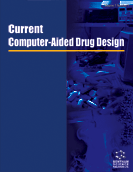摘要
40多年来,细胞膜的流体镶嵌模型支持了我们对含有膜蛋白受体的惰性脂质双层膜的看法,膜受体被细胞外分子随机击打以触发细胞内信号传导事件。然而,分隔胆固醇和富含鞘磷脂的膜微区(称为脂筏)空间排列受体和效应物以促进信号转导所必需的动力学有利的相互作用的想法听起来更现实。尽管它们对于配体 - 受体相互作用的动态具有重要意义,但是由于脂质筏和生物膜的膜相的更高的可变性和复杂性,其作为一个整体仍然比其他类别的生物分子探索得少,这很少提供详细的原子级结构X射线晶体学分析中的数据是分子模拟研究所必需的。一些烷基磷脂(例如,edelfosine:1-O-十八烷基-2-O-甲基-rac-甘油-3-磷酸胆碱)通过招募Fas死亡受体和下游信号传导分子选择性诱导癌细胞凋亡成为脂筏表明这些潜在的药物靶点值得进行更深入的研究。在此,我们回顾了脂筏的结构,它们在凋亡信号通路中的作用以及它们作为用于治疗癌症的药物靶标的潜在作用。
关键词: 脂筏,凋亡,烷基磷脂,癌症,edelfosine,细胞膜
Current Medicinal Chemistry
Title:Beyond the "Lock and Key" Paradigm: Targeting Lipid Rafts to Induce the Selective Apoptosis of Cancer Cells
Volume: 25 Issue: 18
关键词: 脂筏,凋亡,烷基磷脂,癌症,edelfosine,细胞膜
摘要: For more than 40 years, the fluid mosaic model of cellular membranes has supported our vision of an inert lipid bilayer containing membrane protein receptors that are randomly hit by extracellular molecules to trigger intracellular signaling events. However, the notion that compartmentalized cholesterol- and sphingomyelin-rich membrane microdomains (known as lipid rafts) spatially arrange receptors and effectors to promote kinetically favorable interactions necessary for the signal transduction sounds much more realistic. Despite their assumed importance for the dynamics of ligand-receptor interactions, lipid rafts and biomembranes as a whole remain less explored than the other classes of biomolecules because of the higher variability and complexity of their membrane phases, which rarely provide the detailed atomic-level structural data in X-ray crystallography assays necessary for molecular modeling studies. The fact that some alkylphospholipids (e.g. edelfosine: 1-O-octadecyl-2-O-methyl-rac-glycero-3-phosphocholine) selectively induce the apoptotic death of cancer cells by recruiting Fas death receptors and the downstream signaling molecules into clusters of lipid rafts suggests these potential drug targets deserve a more in-depth investigation. Herein, we review the structure of lipid rafts, their role in apoptotic signaling pathways and their potential role as drug targets for the treatment of cancer.
Export Options
About this article
Cite this article as:
Beyond the "Lock and Key" Paradigm: Targeting Lipid Rafts to Induce the Selective Apoptosis of Cancer Cells, Current Medicinal Chemistry 2018; 25 (18) . https://dx.doi.org/10.2174/0929867325666180111100601
| DOI https://dx.doi.org/10.2174/0929867325666180111100601 |
Print ISSN 0929-8673 |
| Publisher Name Bentham Science Publisher |
Online ISSN 1875-533X |
 63
63 11
11 1
1 1
1
- Author Guidelines
- Graphical Abstracts
- Fabricating and Stating False Information
- Research Misconduct
- Post Publication Discussions and Corrections
- Publishing Ethics and Rectitude
- Increase Visibility of Your Article
- Archiving Policies
- Peer Review Workflow
- Order Your Article Before Print
- Promote Your Article
- Manuscript Transfer Facility
- Editorial Policies
- Allegations from Whistleblowers
- Announcements
Related Articles
-
Safety and Efficacy of Melatonin in Pediatric Migraine Prophylaxis
Current Drug Safety Vascular Effects of Antiarrhythmic Drugs and the Roles of K+ Channels
Current Medicinal Chemistry - Cardiovascular & Hematological Agents The Use of Biomarkers in Sepsis: A Systematic Review
Current Pharmaceutical Biotechnology Effect of Hemodialysis on Pharmacokinetics of Ezogabine/Retigabine and its N-Acetyl Metabolite in Patients with End Stage Renal Disease
Current Clinical Pharmacology Monoamine Oxidase-B (MAO-B) Inhibitors in the Treatment of Alzheimer’s and Parkinson’s Disease
Current Medicinal Chemistry Current Strategies to Achieve Further Cardiac and Renal Protection through Enhanced Renin-Angiotensin-Aldosterone System Inhibition
Reviews on Recent Clinical Trials Goal Directed Fluid Therapy
Current Pharmaceutical Design Ganoderma lucidum: A Potential for Biotechnological Production of Anti-Cancer and Immunomodulatory Drugs
Recent Patents on Anti-Cancer Drug Discovery Perspectives on Brain-Targeting Drug Delivery Systems
Current Pharmaceutical Biotechnology Update on Anti-TNF-Alpha Treatment in Rheumatic Diseases
Current Drug Therapy Angiotensin Converting Enzyme (ACE) Inhibitory Peptides: Production and Implementation of Functional Food
Current Pharmaceutical Design Purine Ionotropic (P2X) Receptors
Current Pharmaceutical Design Biotechnological Approaches for the Treatment of Inflammatory Diseases
Anti-Inflammatory & Anti-Allergy Agents in Medicinal Chemistry Chemical and Pharmacological Significance of 1,4-Dihydropyridines
Current Organic Chemistry Adverse Drug Reactions: Trends in a Tertiary Care Hospital
Current Drug Safety Magnesium and Anaesthesia
Current Drug Targets Role of Old Antibiotics in Multidrug Resistant Bacterial Infections
Current Drug Targets Generation of a Chimeric Plasmin-resistant VEGF165/VEGF183 (132-158) Protein and its Comparative Activity
Protein & Peptide Letters Treatment of Diabetic Foot Ulcers
Immunology, Endocrine & Metabolic Agents in Medicinal Chemistry (Discontinued) Molecular Regulation and Pharmacology of Pacemaker Channels
Current Pharmaceutical Design


























